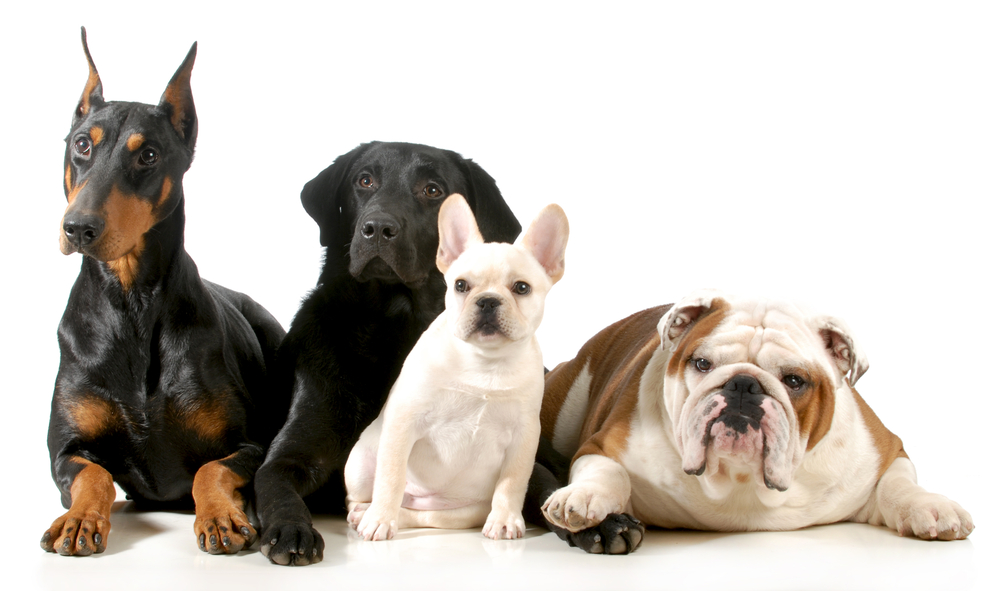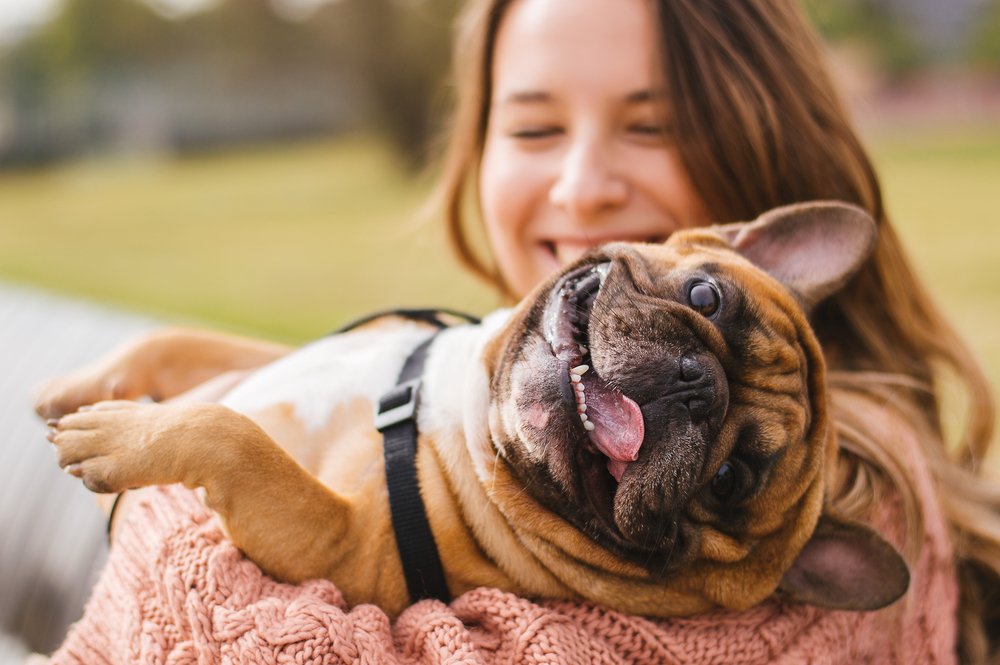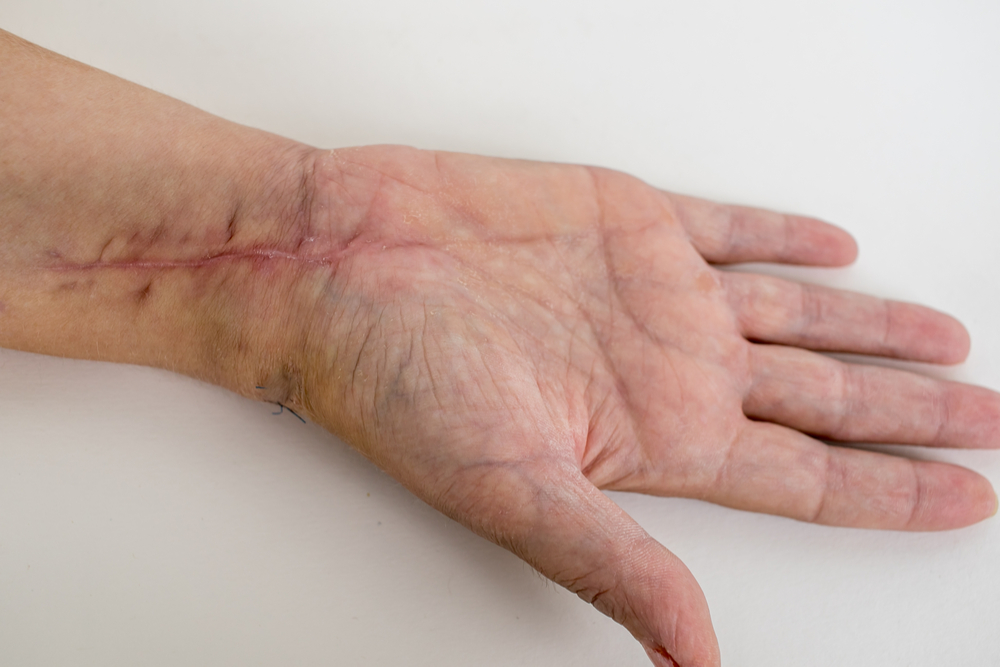- Canine cosmetic surgery has been going on for longer than you’d think.
- Some dogs are getting Neuticles to keep their confidence at the dog park.
- Many plastic surgery procedures have health benefits for the dogs involved.
Obie the Obese Dachshund stepped on the social media scene in 2012 in a video proclaiming his efforts to lose weight. Weighing in at a hefty 77 pounds, Obie had difficulty moving around with his dragging belly. To put that in perspective, the average healthy dachshund weighs between 16 and 32 pounds.
The dachshund’s new owner partnered with their vet to put Obie on the fast track to a healthier lifestyle. In just 8 months, Obie dropped down to 37 pounds. However, his dragging belly was still dragging. The loose skin left over from his formerly formidable stomach was continuing to impede movement and getting in the way of his new lease on life.
That’s why, in 2013, Obie received a tummy tuck. His veterinarian removed the excess skin, giving him a leaner build and making it easier for him to run and play. You heard that right – a canine tummy tuck.
More and more owners are turning to elective surgery for their dogs to improve their pet’s quality of life. In some cases, owners and breeders are even turning to surgery for cosmetic reasons, in the effort to make sure their dogs look their best.
The growing trend has met a mixed reception. Some concede that medically beneficial surgery could have some merit. Others are concerned about the practice being abused to create even more “designer dogs.” Still more hear the words “plastic surgery” and “dog” in the same sentence and run for the hills.

Classic but controversial operations
Despite recent attention paid to the subject of canine plastic surgery, using surgical methods to alter a dog’s appearance is hardly new. Many popular breeds have been altered over the years for practical and cosmetic reasons.
So, what procedures are Spot and Rex going in for? The following procedures are still in practice today.
Ear cropping
Close your eyes and picture a Doberman Pinscher. He’s lean and alert. His pointy ears sticking straight up from his pint-sized head. Most people imagine Doberman Pinschers this way without realizing that those pointy erect ears are a product of cosmetic surgery.
A natural Doberman Pinscher has ears more like a golden retriever. They fold down over the front, making the dog no less adorable, but definitely less intimidating. However, dog owners and breeders have been cropping Doberman Pinscher ears to give them that imposing profile.
And it’s not just Doberman’s going under the knife. Great Danes, Mastiffs, Boxers, and several other breeds have their ears cut and made to stand on end. Some claim that this reduces the risk of ear infections and trauma to the pinna (the part that folds down). But these claims are as of yet not scientifically supported.
These days, cropping is banned in many countries. In those countries that allow it, the surgery is performed when puppies are about 10-14 weeks old. The pinnae are cut away, removing the fold. The remaining ear usually stands on end with some help.
Tail docking
Tail docking might more accurately be called tail removal. When a dog’s tail is docked, it is essentially cut away, leaving only a nub. The practice is somewhat common among over 60 breeds of dog. However, it is most often associated with long haired dogs, like Cocker Spaniels and Schnauzers, and work dogs like Boxers and Rottweilers.
Historically, tail docking has been performed for a variety of reasons. The Romans docked dog tails as a preventative measure against rabies. Tails have also been docked to prevent injury when fighting or to help dogs with longer coats keep themselves clean. Rottweilers in particular were historically used to pull carts. Docking their tails helped prevent injury while they worked.
Whatever the historical reasons for tail docking, these days it’s usually done for cosmetic purposes. Many owners will dock tails to remain consistent with breed ideals.
Other owners do claim legitimate reasons, citing the risk tails pose for hunting dogs and guard dogs. Despite these claims, the largest study to date on the subject states that the incidence of dog tail injuries is .023%, meaning that 500 dogs would have to be docked for each injury prevented.

What’s new in canine plastic surgery
Dog owners may be slowly turning away from tail docking and ear cropping, but that doesn’t mean they won’t consider a plastic surgery solution to a health or cosmetic concern. The following procedures are all very real options for dog owners. Are they valid strategies for improving a dog’s quality of life or simply a salve for the owner’s self-esteem? You’ll have to decide for yourself.
Testicular implants
Yes, you heard that right. Some dog owners are vying to replace their neutered friend’s package with silicone implants. These neuticles were invented in 1995 by Gregg Miller. Before you ask, no, he is not a veterinarian. However, he did invent a product that has sold over 650,000 units. Yes, it’s that popular.
Neuticles have no scientifically supported medical benefit. That being said, dog owners and Miller himself cite the psychological benefit for the dog in question. Dog owners who have had the procedure done say their dogs are more confident and seem less affected emotionally about their neutering afterward. For these reasons, the little silicone testes are considered a means of counteracting the negative effects of neutering.
Ideally, neuticles would be inserted during the neutering process, while the dog is still under general anesthesia. However, they can be inserted years after a dog has already been fixed. Recovery from the procedure is the same as that from a regular neutering: restrict movement for about 10 days and don’t let your dog mess with the surgical site.
Eye replacement
Dogs can lose eyes for lots of reasons, including accidents and infections. Some dog breeds are even prone to losing eyes because of the position of the eye in the socket. When a dog does lose an eye, the area is typically sutured closed. Over time, the empty socket may become misshapen, giving the dog a lopsided appearance.
This can be corrected in a couple of different ways. One option is having an orbital prosthesis inserted during the eye removal procedure. The socket is then sutured up around the prosthesis. The implant gives the socket body, which prevents it from sinking. The dog may just look like he’s winking.
If that’s not enough, visible eye implants can be inserted. In some cases, these are silicone, like the silicone eye implants invented by, you guessed it, Gregg Miller. They could also have a glass component. Like these silicone and glass eye prosthetics that proved successful and harmless even two and half years later.
Rhinoplasty
In other words, a doggy nose job. Before you get out your pitchfork, it’s not what you think. These nose jobs are not done to improve the aesthetics of your dog’s profile. They are intended to correct breathing problems in dogs prone to narrow nasal airways.
Some dogs are brachycephalic. Basically, they have shortened heads and squished faces. The classic example of a brachycephalic dog would be a Pug or Bulldog. However, even Boston Terriers and Chihuahuas fall under this category.
Brachycephalic dogs are prone to breathing problems, which in turn can lead to chronic bronchitis and Chronic Obstructive Pulmonary Disease (COPD). This is largely due to the aforementioned narrowed air passages, also called stenotic nares.
When one of these dogs gets a rhinoplasty, the nostril is surgically enlarged. The procedure takes less than an hour and the dissolvable stitches are gone within a week. The surgery sometimes involves trimming the soft palate if it is too long, another feature common to brachycephalic canines.
Facelift
A doggy facelift does pretty much what you’d expect. It reduces wrinkles on a canines face and eyes. This procedure is common for dog breeds that have partially or even mostly obscured eyes. These skin folds can easily attract bacteria, as they are difficult to keep clean. If a skin fold covers a dog’s eye, it can eventually lead to an eye infection.
This was the case with Ozzy, a Chow Chow who suffered from eye infections so bad that his eyes were constantly “weeping.” Ozzy received a facelift to remove the wrinkles around his face and eyes. He also received an eye lift (more on this later) to treat the same condition.
The procedure was much like a human facelift. The excess skin was removed and the remaining skin was pulled taught before being stitched up.
Of course, not every dog owner has sought the doggy facelift for medical reasons. Some breeders have sought face lifts to improve a dog’s appearance, as was the case with a Chinese breeder in 2013 who subjected a healthy Tibetan Mastiff to the procedure. He was hoping to make the male dog more appealing to female dog owners looking to breed.
Eyelift
We mentioned above that Ozzy the Chow Chow received an eyelift in addition to his facelift. Some dog breeds have congenital defects that cause their eyelids to roll inward or outward. This can lead to a variety of eye problems.
When the eyes roll inward, this is called entropion. The animal’s eyelashes rub against the cornea, causing irritation. Over time, the eyes become more easily infected. Dogs with this condition are at a greater risk of losing an eye. Breeds that tend toward this defect include Chow Chows and Sharpeis.
When the eyes roll outward, this is called ectropion. The lining of the eye, called the conjunctiva, is exposed and appears red. This exposure leads to irritation of the conjunctiva and infection. Breeds that tend toward this defect include St. Bernards, Great Danes, and Bloodhounds.
In either case, an eyelift can resolve the issue. The procedure removes skin around the eye area to help reposition the eye. For example, a surgeon might remove skin from the lower lid to help force an entropic eye to roll a little more outward.
Lip lift
The technical term for this procedure is cheiloplasty. It’s goal is to prevent excessive drooling in large breeds like Mastiffs, Bloodhounds, and Newfoundlands.
Too much drool is more than just a nuisance for the owner. It is unhygienic and leads to chronic mouth infections, which in turn can cause complications in the liver, kidneys, and heart. You can’t very well ask your dog to curb the saliva, so instead, owners have been turning to a rather unique surgical alternative.
A cheiloplasty involves stitching the lower and upper lips together to create a pocket or “dam.” The pocket traps the saliva before it gets all over the dog’s muzzle. In doing so, it encourages the dog to swallow the saliva instead of letting it fly.
Tummy tuck
To be fair, this could also be considered an abdominoplasty (tummy tuck) or a breast lift. As it has been applied in canines, there is little difference between the two. In both cases, the goal is to remove sagging skin in the lower region of the dog, also called its undercarriage.
In 2009 two rescue dogs in the UK reportedly received “breast reduction” surgery to make them more appealing to potential owners. The dogs had been severely overbred, and their mammary glands were just about dragging as they walked. Wallace Kennels in Essex hoped that the procedure would make it easier to rehome the animals and it was an apparent success.
However, a more recent and more well-documented example of this type of surgery involved Obie the Dachshund. We mentioned in the intro that Obie lost significant weight but had skin so loose it impeded his movement. His “tummy tuck,” similar to the breast reduction mentioned above, helped to tighten up his undercarriage.
The usual risks
While there appears to be no unique risks with these procedures, there are still the usual risks associated with major surgery. Anesthesia can be dangerous for humans and animals alike, particularly where the recipient has heart trouble, anemia, diabetes, or even just dehydration.
The Tibetan Mastiff mentioned above who underwent a facelift in 2013 died on the operating table due to heart failure that was thought to be associated with general anesthesia. If a procedure is done properly, these events are rare but hardly impossible.
Given the risks of major surgery, it’s worth weighing the costs and benefits of such a procedure. It’s also important to remember that, at the end of the day, a happy dog is a healthy one.









